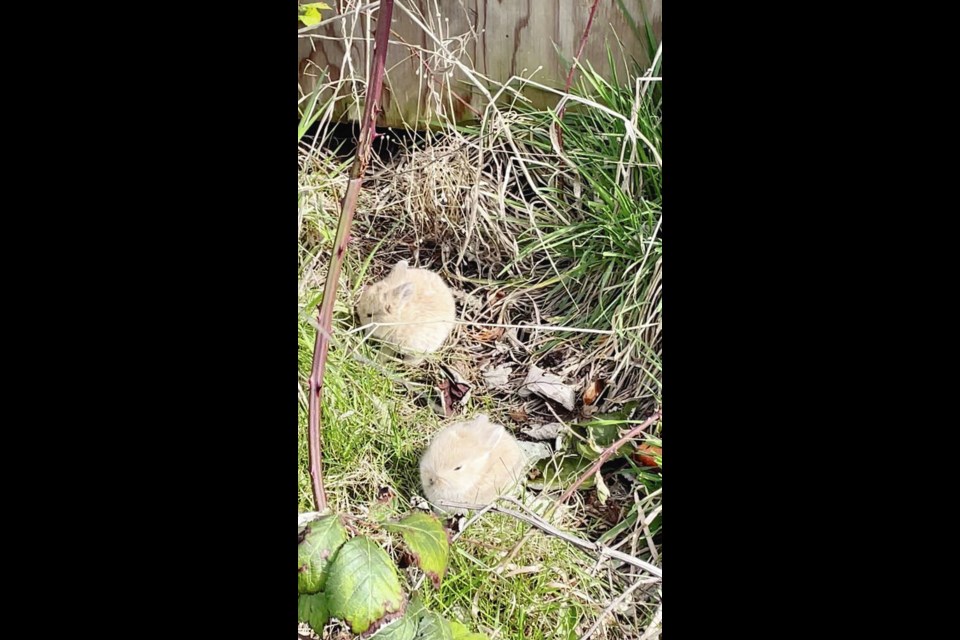Some cute new neighbours have Esquimalt residents concerned the municipality could end up with an out-of-control bunny population.
A domestic rabbit mother and her five babies recently took up residence at a construction site at the former English Inn on Lampson Street.
While they’re adorable, neighbours are worried the population could grow rapidly, as has happened in the past at the University of Victoria and at the Helmcken Road interchange.
Jay Smith, community relations manager with Aragon Properties, which is redeveloping the site into the Rosemead Inn, said he first learned of the rabbit family a few weeks ago, when he noticed neighbours staring at something behind a fence at the property.
Smith said the little family is no longer on his site, but the mother is nearby and residents believe she is pregnant again. One baby, who Smith named Aragon, was fostered by a neighbour, one was taken in by a rescue, and three are unaccounted for, possibly taken by predators, he said.
“You can catch them no problem, but where the heck do you put them?” said Carolyn Birch, who lives nearby and has been trying to figure out what to do with the domestic rabbits.
She and a friend have contacted several animal rescues, but most don’t take rabbits and one that specifically does, Amy’s Bunny Barn, is full to the brim.
Birch, who has two bunnies of her own, is frustrated that no one seems to be responsible for the animals, and she worries they could cause damage outside by chewing wires and digging.
They can also multiply quickly, because one female can have a litter of up to a dozen babies every month.
“If somebody doesn’t kind of start to be proactive about the population, there’s going to be another outbreak,” Birch said.
Amy McLaughlin, who runs Amy’s Bunny Barn, says she’s overwhelmed with requests to take in rabbits that people want to surrender. She has been caring for about 70 rabbits at any given time over the last three years, with a waitlist that’s grown so long, she’s stopped taking names.
McLaughlin said she feels disheartened that more rescues don’t take in rabbits, and that people acquire rabbits impulsively without realizing the responsibility they’re taking on.
She wants those interested in getting a bunny to be aware that they should get the animal spayed or neutered, just like a cat or dog, and that the animals can live up to a decade or more.
Laura-Leah Shaw, an animal advocate who arranged for a Texas sanctuary to take up to 1,000 rabbits from the University of Victoria to prevent a cull of the exploding population in 2010, said she’s glad residents are trying to rescue and rehome the rabbits. “You don’t want to let it get out of hand,” she said.
About 1,500 rabbits were living on UVic’s campus for several years before they were able to catch them and find enough space in sanctuaries to care for the animals.
In 2016, the Transportation Ministry reportedly paid $20,000 to trap more than 100 domestic bunnies at the Helmcken Road interchange, and volunteers fundraised to fly the animals to the sanctuary in Texas.
The domestic rabbits live “in misery” when they’re dumped outside, vulnerable to prey and sometimes without the right diet, Shaw said.
Shaw said the municipality should step up to catch the animals in Esquimalt and pay to have them spayed and neutered to prevent them from breeding.



